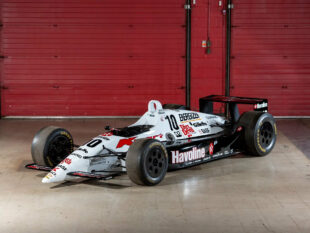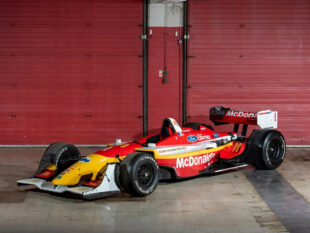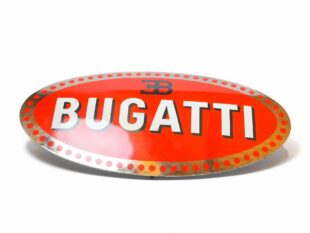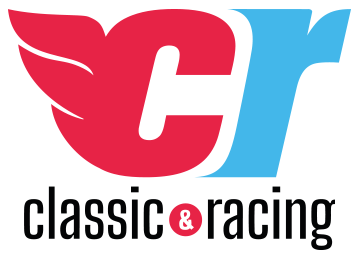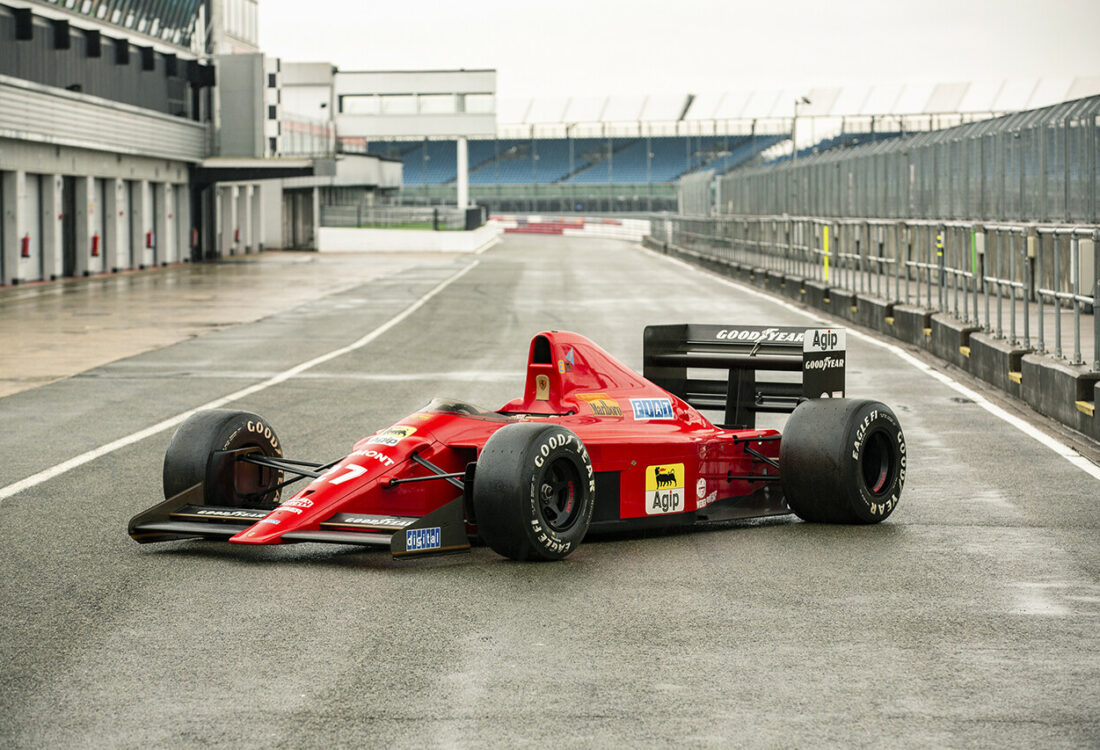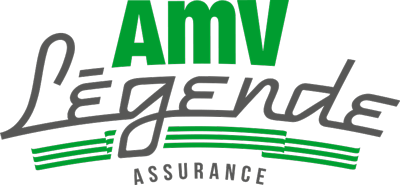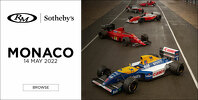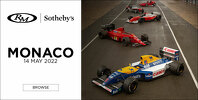
FERRARI 640
Les services + de Classic Racing
Bientôt disponible
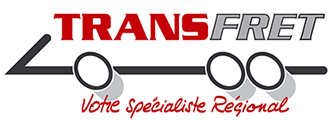
Bientôt disponible
A votre service depuis 1995, Transfret c’est avant tout le respect des collaborateurs et des clients.
Pour transporter de 1 à 6 voitures partout en Europe, contactez nous sur www.groupe-transfret.com
– Pilotée par Nigel Mansell pour la Scuderia Ferrari lors de la saison 1989 de Formule 1
– Conduite à la victoire par Mansell aux Grands Prix du Brésil et de Hongrie
– La première voiture Ferrari F1 à être équipée d’une boîte de vitesses semi-automatique
– La Ferrari 640 a valu à l’équipe de course italienne la 3e place au championnat du monde des constructeurs en 1989
– Possédée par Mansell et conservée dans sa collection personnelle depuis 1989, n’ayant prétendument pas couru depuis sa dernière sortie en Grand Prix
À la fin des années 1980, Nigel Mansell aurait pu se remémorer une carrière fructueuse en Formule 1 jusque là, même si le meilleur restait à venir. Près de la moitié de la décennie passée avec Lotus, suivie de la seconde moitié avec Williams, avait été acclamée après un démarrage lent marqué par des accidents et des problèmes de fiabilité. Mansell deviendrait connu pour son approche “tout ou rien” qui lui a valu un total de 31 victoires en course contre 32 abandons, dont beaucoup étaient le résultat de son style de course tenace. L’Anglais avait goûté au succès avec Lotus, décrochant cinq podiums, et alors que les victoires en course commençaient à arriver avec sa deuxième équipe, le décor était planté pour une dernière opportunité en or – entrer dans la Scuderia Ferrari.
Au cours des saisons de Formule 1 1986 et 1987, Mansell a constamment affronté les pilotes les plus rapides de la grille, alertant les équipes rivales de sa forme, en particulier Ferrari, qui n’avait pas obtenu de titre de champion du monde depuis que Jody Scheckter a remporté le trophée en 1979. L’équipe était à la recherche d’un nouveau pilote pour s’associer à Gerhard Berger après avoir déclaré que le contrat du titulaire Michele Alboreto ne serait pas renouvelé. L’Italien a terminé son séjour de cinq ans avec Ferrari avec 80 inscriptions en course, un record qui durera jusqu’à ce que Berger le dépasse en 1995.
En 1986, Mansell est monté neuf fois sur le podium, cinq de ces victoires en course, impressionnant continuellement au volant de sa Williams FW11. La saison suivante, l’Anglais fait mieux avec six victoires en course. En 1988, Canon Williams avait perdu son partenariat avec Honda en tant que fournisseur de moteurs, et la voiture de l’équipe pour cette saison – la FW12 – serait propulsée par un moteur V8 fourni par Judd. Bien que Mansell ait montré des lueurs de sa forme avec deux 2e places, cette année s’est avérée difficile pour lui et l’équipe Williams alors qu’il entamait et se retirait de 12 courses sur le calendrier de 16 courses.
Avec Ferrari désireux de remplacer Alboreto, Mansell était un candidat évident de la grille de Formule 1 pour rejoindre la Scuderia. Toutes les frustrations avec la voiture Williams à moteur Judd et l’empressement pour une dernière tentative pour le championnat des pilotes avec le soutien d’une équipe solide ont générés une opportunité à point nommé. Remarquablement, Mansell serait le dernier pilote d’équipe personnellement recruté par Enzo Ferrari, le grand fondateur de l’entreprise étant étroitement impliqué dans la gestion des opérations F1 jusqu’à son décès en août 1988. Mansell a décrit cet honneur comme “l’un des plus grands de ma carrière”. et “Il Commendatore” a offert à l’Anglais une Ferrari F40 comme cadeau de bienvenue lors de son adhésion.
Présentation de la Ferrari 640
Mansell a immédiatement sympathisé avec Ferrari et sa base de fans italiens partisans, gagnant le surnom de “Il Leone” – ou “Le Lion” – grâce à son style de conduite courageux. La saison 1989 – la première course de Mansell dans le rouge de la Scuderia Ferrari – a marqué une nouvelle interdiction des moteurs turbocompressés imposée par la FIA, et la nouvelle voiture de Mansell, la Ferrari 640, était propulsée par la Tipo 035/5 ; un moteur V12 de 3,5 litres atmosphérique. Le très respecté John Barnard avait été amené de McLaren pour diriger la conception de la 640, et la voiture serait la première Ferrari sur laquelle l’ingénieur anglais travaillerait.
La 640 devient rapidement reconnaissable avec son nez pointu, son châssis monocoque étroit et ses ailes larges qui abritent les radiateurs. Les ingénieurs de Maranello ont mis au point pour la première fois une boîte de vitesses semi-automatique, équipant cette voiture d’une transmission séquentielle à sept rapports. Cette voiture était depuis longtemps en développement et les patrons de l’équipe de course de Maranello espéraient la présenter un an plus tôt, après avoir commencé ses conceptions en 1987. Le développement de la boîte de vitesses semi-automatique posait cependant des problèmes continuels, et Ferrari devait donc aligner la F1/87/88C précédente lors de la saison 1988.
Avant la première course de la saison 1989, le Grand Prix du Brésil, Mansell est devenu le 78e pilote de la Scuderia en 40 ans d’histoire de l’équipe, et le pilote s’est rendu en Italie pour se familiariser avec la nouvelle Ferrari 640. Le 5 janvier 1989 , sur le Circuit de Fiorano et au volant de la voiture de la saison à venir, l’Anglais établit un nouveau record de piste en 1’08.12, plaçant la barre haute pour la suite. Le 1er février, le châssis 109 a été révélé à la presse comme la toute première voiture de l’équipe Ferrari à être annoncée sans Enzo Ferrari.
La saison 1989 de Formule 1
Aligné à Jacarepaguá, Rio de Janeiro le 26 mars 1989, pour le début de la saison sous de nouvelles couleurs d’équipe, Mansell s’est qualifié à la 6e place, son coéquipier Berger scellant la 3e place. Dans un peloton très compétitif avec Ayrton Senna, Alain Prost et Nelson Piquet, Mansell s’est frayé un chemin jusqu’à l’avant du peloton et a remporté sa première course pour Ferrari, scellant la victoire sur Prost, deuxième, de plus de sept secondes.
Bien que la saison ait commencé si brillamment, la succession de courses suivantes a rapidement amorti la fureur autour de la nouvelle recrue de Ferrari. Des retraits anticipés sont survenues lors des Grands Prix de Saint-Marin, de Monaco, du Mexique et des États-Unis, puis lors de la sixième course de 1989 sur le circuit Gilles Villeneuve au Canada, malgré une qualification à la 5e place, Mansell a été disqualifié au cours d’une chaîne d’événements déroutants. Vers la fin d’une tempête de pluie, Mansell a choisi de se mettre aux stands et de passer aux pneus slicks à la fin du deuxième tour de formation, ce qui signifie qu’il devrait commencer la course depuis la voie des stands. Avec apparemment peu de conseils des officiels de la course, le pilote a quitté la voie des stands pour rejoindre le circuit avant que la grille principale n’ait reçu les feux verts, ce qui a entraîné le drapeau noir pour Mansell.
Les circonstances s’amélioreraient cependant. Dans les courses suivantes, d’abord au Grand Prix de France, puis à Silverstone, le pilote a terminé deux fois 2e dans le châssis 109. Les deux podiums sont arrivés derrière Prost, qui commençait à prendre de l’ampleur derrière sa poussée finalement réussie vers le titre de pilote pour cette année. Au Grand Prix d’Allemagne, Mansell a terminé 3e derrière Prost, 2e, et le vainqueur Senna, tandis que la prochaine course en Hongrie serait l’occasion pour Mansell de briller à nouveau. Remarquablement, “Il Leone” s’est qualifié en 12e position, mais a récupéré la grille pour gagner au Hungaroring lors de la dixième course de la saison, enregistrant également le tour le plus rapide de la journée.
Un autre podium est venu lors de la course suivante en Belgique, où Mansell a terminé 3e au volant du châssis 112, bien que décevant, à ce moment-là, son parcours de points pour la saison serait conclu. Pour les prochaines courses, Mansell continuerait dans le châssis 112, y compris au Grand Prix “de retour” de Ferrari à Monza, où il a été malheureusement contraint d’abandonner avec des problèmes de boîte de vitesses. Lors de la course suivante au Portugal, de retour au volant du châssis 109, il est disqualifié puis dans le châssis 110, il doit abandonner sur problème moteur au Japon, et partir en tête-à-queue en Australie, s’installant finalement à la 4e place du classement du championnat des pilotes. Les dossiers de la Scuderia Ferrari montrent que dans les courses auxquelles le châssis 109 n’a pas participé à la saison 1989 de Formule 1 – y compris les Grands Prix de Belgique, d’Italie, d’Espagne, du Japon et d’Australie – la 640 a été utilisée en réserve comme “T-car”. Mansell a pu conserver le châssis 109, la voiture étant expédiée pour rejoindre sa collection personnelle de voitures en Angleterre en janvier 1990.
Pour la saison 1990, Mansell et l’équipe Ferrari ont continué à souffrir de problèmes de fiabilité, et il a terminé 5e au classement général des pilotes. Des courants sous-jacents de déception et un prétendu traitement favorable pour ses coéquipiers ont conduit Mansell à mettre fin à sa carrière chez Ferrari et, temporairement, à sa carrière en Formule 1 à la fin de cette saison, menaçant de quitter complètement le sport. Frank Williams a sauvé le pilote de cela et il allait finalement devenir champion en 1992, rejoignant et gagnant avec l’équipe Williams qu’il avait quittée pour signer pour Ferrari.
Depuis sa présentation à Mansell en 1990, cette Ferrari 640 a été conservée dans la collection personnelle du pilote, n’ayant prétendument pas roulé depuis sa dernière sortie lors de la saison 1989. La Ferrari aura besoin d’une inspection mécanique et d’une remise en service avant de retourner en course. Une telle opportunité se présente rarement pour posséder une partie de l’histoire de Ferrari et de la Formule 1, ce qui en fait une opportunité attrayante et lucrative pour tout collectionneur de sport automobile.
Course – Date – Participant – Position
Grand Prix du Brésil – 26 mars 1989 – N. Mansell – 1er
Grand Prix de Saint-Marin. – 23 avril 89 – N. Mansell – Ret
Grand Prix de Monaco – 07-Mai-89 – N. Mansell – Ret
Grand Prix du Mexique – 28-Mai-89 – N. Mansell – Ret
Grand Prix des États-Unis – 04-juin-89 – N. Mansell – Ret
Grand Prix du Canada – 18-juin-89 – N. Mansell – DSQ
Grand Prix de France – 09-juil-89 – N. Mansell – 2ème
Grand Prix de Grande-Bretagne – 16 juillet 1989 – N. Mansell – 2e
Grand Prix d’Allemagne – 30-juillet-89 – N. Mansell – 3e
Grand Prix de Hongrie – 13 août 89 – N. Mansell – 1er
Grand Prix du Portugal. – 24-Sept-89 – N. Mansell – Ret
Retrouvez l’intégralité des lots en cliquant ici.
![]() For sale 1989 Ferrari 640.
For sale 1989 Ferrari 640.
– Driven by Nigel Mansell for Scuderia Ferrari in the 1989 Formula 1 season
– Raced to victory by Mansell at the Brazilian and Hungarian Grands Prix
– The first Ferrari F1 car to be equipped with a semi-automatic gearbox
– The Ferrari 640 earned the Italian race team 3rd in the 1989 World Constructors’ Championship
– Owned by Mansell and retained in his personal car collection since 1989, having allegedly not run since its last Grand Prix outing
By the end of the 1980s, Nigel Mansell would have been able to look back on a fruitful Formula 1 career so far, though the best was yet to come. Almost half the decade spent with Lotus, followed by the latter half with Williams, had brought steady acclaim after a slow start marred by crashes and reliability issues. Mansell would become known for his “all or nothing” approach that brought him a career total of 31 race wins balanced against 32 retirements, many of which were the result of his tenacious racing style. The Englishman had tasted success with Lotus, netting five podium finishes, and while the race wins started to come with his second team, the stage was set for one final golden opportunity—enter Scuderia Ferrari.
Over the 1986 and 1987 Formula 1 seasons, Mansell was consistently up against the fastest drivers on the grid, alerting rival teams to his form—particularly Ferrari, who had not secured a Driver’s Championship title since Jody Scheckter clinched the trophy in 1979. The team was on the look-out for a new driver to partner Gerhard Berger after declaring that the contract of the incumbent Michele Alboreto would not be renewed. The Italian ended his five-year stay with Ferrari with 80 race entries, a record that would stand until Berger surpassed it in 1995.
In 1986, Mansell stepped onto the podium nine times, five of those race victories—continually impressing from behind the wheel of his Williams FW11. The following season, the Englishman went one better with six race wins. By 1988, Canon Williams had lost their relationship with Honda as an engine supplier, and the team’s car for that season—the FW12—would be powered by a Judd-supplied V-8 engine. Though Mansell showed glimmers of his form with two 2nd-place finishes, that year proved to be tough for him and the Williams team as he started and withdrew from 12 races out of the 16-race calendar.
With Ferrari eager to replace Alboreto, Mansell was an obvious candidate from the Formula 1 grid to join the Scuderia. Any potential frustrations with the Judd-powered Williams car and eagerness for one final tilt towards the Driver’s Championship with the backing of a strong team combined for a very timely opportunity. Remarkably, Mansell would be the last team driver personally recruited by Enzo Ferrari, with the great company founder closely involved in the running of the F1 operation until his passing in August 1988. Mansell described the honour as “one of the greatest in my career” and “Il Commendatore” presented the Englishman with a Ferrari F40 as a welcome gift upon joining.
Introducing the Ferrari 640
Mansell instantly hit it off with Ferrari and its partisan Italian fanbase, earning the nickname of “Il Leone”—or “The Lion”—thanks to his courageous driving style. The 1989 season—Mansell’s first racing in the red of Scuderia Ferrari—marked a newly introduced ban on turbo-charged engines imposed by the FIA, and Mansell’s new car, the Ferrari 640, was powered by the Tipo 035/5; a normally aspirated, 3.5-litre, V-12 engine. The highly respected John Barnard had been brought over from McLaren to lead the design of the 640, and the car would be the first Ferrari that the English engineer would work on.
The 640 quickly became recognisable with its sharp nose, narrow monocoque chassis and wide wings that housed the radiators. Engineers at Maranello pioneered a semi-automatic gearbox for the first time, equipping this car with a seven-speed sequential transmission. This car had long been in development and bosses at the Maranello race team had hoped to introduce it one year earlier, having begun its designs in 1987. The development of the semi-automatic gearbox posed continual problems, however, and so Ferrari had to field the preceding F1/87/88C in the 1988 season.
Ahead of the first race of the 1989 season, the Brazilian Grand Prix, Mansell became the Scuderia’s 78th race entrant in the team’s 40-year history, and the driver travelled to Italy to get to grips with the new Ferrari 640. On 5 January 1989, at the Fiorano Circuit and behind the wheel of the forthcoming season’s car, the Englishman set a new track record at 1’08.12, setting the bar high for what was to come. On 1 February, chassis 109 was revealed to the press as the first-ever Ferrari team car to be announced without Enzo Ferrari.
The 1989 Formula 1 season
Lining up at Jacarepaguá, Rio de Janeiro on 26 March 1989, for the beginning of the season in new team colours, Mansell qualified in 6th place, with his teammate Berger sealing 3rd spot. In a highly competitive field featuring the likes of Ayrton Senna, Alain Prost and Nelson Piquet, Mansell fought his way through to the front of the field and won his debut race for Ferrari—sealing victory over 2nd-place Prost by over seven seconds.
Though the season had started so brightly, the following succession of races quickly dampened the furore around Ferrari’s newest recruit. Early retirements came in the subsequent San Marino, Monaco, Mexico, and U.S.A. Grands Prix, then in the sixth race of 1989 at the Circuit Gilles Villeneuve in Canada, despite qualifying in 5th place, Mansell was disqualified during a confusing chain of events. Towards the end of a rainstorm, Mansell chose to pit and switch to slick tyres at the end of the second formation lap, meaning he would have to start the race from the pit lane. With seemingly little advice from race officials, the driver left the pit lane to join the circuit before the main grid had been shown green lights, resulting in Mansell being black-flagged.
Circumstances would improve, though. In the following races, first at the French Grand Prix, and then at Silverstone, the driver twice finished 2nd in chassis 109. Both podium finishes came in behind Prost, who was starting to gain momentum behind his ultimately successful push towards the Driver’s title for that year. At the German Grand Prix, Mansell finished 3rd behind 2nd-placed Prost and the winning Senna, while the next race outing in Hungary would be Mansell’s chance to shine once again. Remarkably, “Il Leone” qualified in 12th position, but reclaimed the grid to win at the Hungaroring in the tenth race of the season, also recording the fastest lap of the day in the process.
Another podium finish came at the next race in Belgium, where Mansell finished 3rd when driving chassis 112, though disappointingly, at that point his points haul for the season would be concluded. For the next few races, Mansell would continue in chassis 112, including at Ferrari’s “homecoming” Grand Prix in Monza, where he was disappointingly forced to retire with gearbox problems. At the next race in Portugal, back behind the wheel of chassis 109, he was disqualified and then in chassis 110, he had to retire with engine problems in Japan, and spun off in Australia, finally settling on 4th in the Driver’s Championship standings. Scuderia Ferrari records show that in the races that chassis 109 did not participate in the 1989 Formula 1 season—including Grands Prix in Belgium, Italy, Spain, Japan, and Australia—the 640 was used in reserve as a “T-car”. Mansell got to keep chassis 109, with the car shipped to join his personal car collection in England in January 1990.
For the 1990 season, Mansell and the Ferrari team continued to suffer bad luck with reliability issues, and he finished 5th overall in that year’s Driver’s standings. Undercurrents of disappointment and alleged favourable treatment for teammates resulted in Mansell calling time on his Ferrari career and—temporarily—his Formula 1 career at the end of that season, threatening to quit the sport altogether. Frank Williams saved the driver from that and he would go onto finally become a Driver’s Champion in 1992, re-joining and winning with the Williams team he left to sign for Ferrari.
Since being presented to Mansell in 1990, this Ferrari 640 has been kept in the driver’s personal car collection, having allegedly not run since its last outing in the 1989 season. The Ferrari will need mechanical inspection and recommissioning prior to returning to the race track. Rarely does such an opportunity come up to own part of Ferrari and Formula 1 history, making this an enticing and lucrative opportunity for any motorsport collector.
Race – Date – Entrant – Position
Brazilian Grand Prix – 26-Mar-89 – N. Mansell – 1st
San Marino Grand Prix – 23-Apr-89 – N. Mansell – Ret
Monaco Grand Prix – 07-May-89 – N. Mansell – Ret
Mexican Grand Prix – 28-May-89 – N. Mansell – Ret
U.S. Grand Prix – 04-Jun-89 – N. Mansell – Ret
Canadian Grand Prix – 18-Jun-89 – N. Mansell – DSQ
French Grand Prix – 09-Jul-89 – N. Mansell – 2nd
British Grand Prix – 16-Jul-89 – N. Mansell – 2nd
German Grand Prix – 30-Jul-89 – N. Mansell – 3rd
Hungarian Grand Prix – 13-Aug-89 – N. Mansell – 1st
Portuguese Grand Prix – 24-Sept-89 – N. Mansell – Ret
Les dernières annonces de RM Sotheby's
